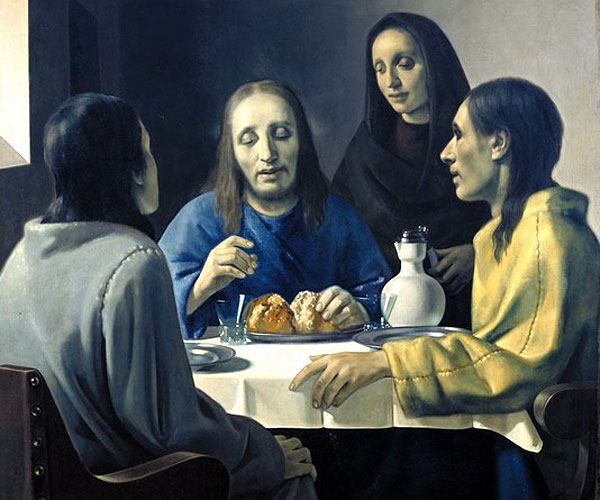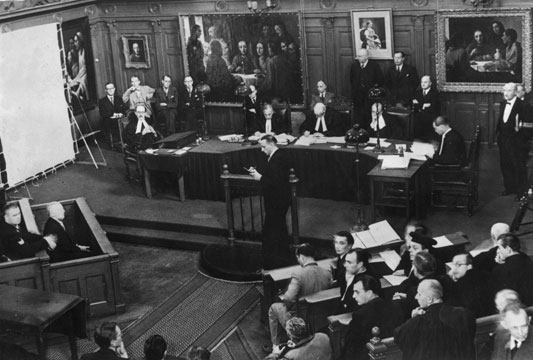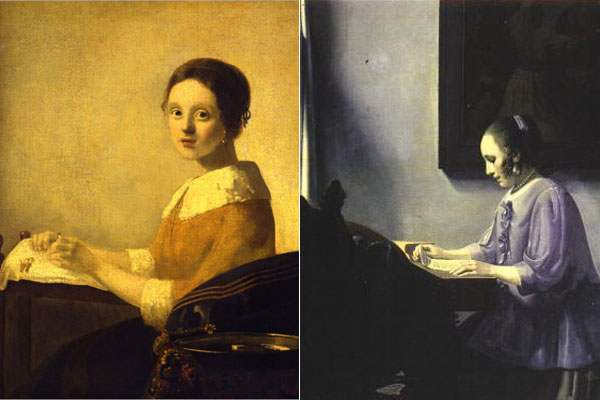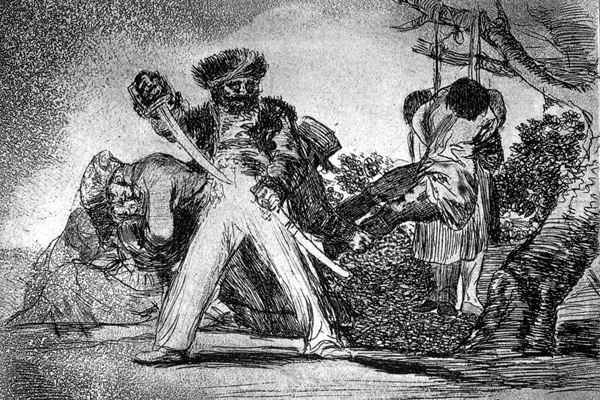
When it comes to art and art history, we’ll go out of our way for an authentic experience. Sure, between the Frick and the Met, eight of the 37 acknowledged paintings by Vermeer in existence are just a walk away from our offices. But to really understand Vermeer, to get an authentic experience of his art, we suggest you buy a ticket to Holland and take the walking tour of the master’s life in Delft detailed in our new “Art + Travel Europe: Step into the Lives of Five Famous Painters”. There is however, a strange chapter of the history surrounding Vermeer that has nothing to do with authenticity. Indeed, as a new retrospective of master forger Han van Meegeren at the Museum Boijmans Van Beuningen in Rotterdam has it, some of the most exciting things to happen in the field of Vermeer studies in the 20th Century centered around some very inauthentic works of art.

The tale of van Meegeren is long and twisted. Once a struggling artists and fan of the painters of the Dutch Golden Age, it could be argued that van Meegeren became perhaps the world’s best counterfeiter no for love of money, but for love of art. His recreations of centuries-old styles, techniques, and materials were exhaustive and exacting—bordering on genius by some estimations. His mastery of forgery came to public attention when he was tried in Amsterdam for collaboration with the Nazis after allegations surfaced that he had sold a Vermeer, “Christ with the Adulteress” to a broker who delivered it to German Reichsmarshall Hermann Göring. Accused of selling a national treasure to an enemy after the war, van Meegeren defended himself at the 1947 trail with the shocking admission that, “The painting in Göring’s hands is not, as you assume, a Vermeer of Delft, but a Van Meegeren! I painted the picture!” While the court lifted the collaboration charges after a full study of the painting in question and allowing him to create a new forged Vermeer (which ironically made him a national hero for keeping Nazis away from actual Vermeers), authorities still found him guilty of fraud and he suffered an eventually fatal heart attack during the appeal proceedings. A Dutch opinion poll at the time named him the second most popular public personality in the country, right behind the Prime Minister.

The intervening years have only added to van Meegeren’s reputation as a skilled technician, gifted visionary, and fascinating, complicated personality. The fallout from his various forgeries was immense, costing individuals and institutions alike millions of dollars and serious blows to their prestige. He is both a villain and a hero in the modern art world, one who’s actions precipitated a whole new era in art forensics. Timed to overlap with the Mauritshuis’ upcoming exhibition, “The Young Vermeer” (which will soon have moved from the Scottish National Galleries), “Van Meegeren’s Fake Vermeers” takes the artist’s work as a whole, presenting his Vermeer forgeries as well as compositions meant to be by artists like Frans Hals, Pieter de Hooch, and Gerard ter Borch—artists who hold a greater, more important place in the history of Dutch art, but whose current fame is eclipsed by the man who made an art of ripping them off.
“Van Meegeren’s Fake Vermeers”
May 12 – August 22, 2010
Museum Boijmans Van Beuningen
18-20 Museumpark
Rotterdam, Netherlands
+31 10-441-9475
www.boijmans.nl
Images:
Top—”Supper at Emmaus”, Han van Meegeren, 1936, courtesy of Museum Boijmans Van Beuningen.
Middle—Van Meegeren on trail in Amsterdam, 1947.
Bottom (left to right): “The Lacemaker”, van Meegeren, 1925, courtesy of the National Gallery of Art, Washington D.C., “Lady Reading Music”, van Meegeren, 1936, courtesy of the Rijksmuseum,
Tagged with: Art + Travel crime delft Delft exhibitions forgeries han van meegren Holland museum boijmans van beuningen Rotterdam Vermeer
 MUSEYON BOOKS Smart City Guides for Travel, History, Art and Film Lovers
MUSEYON BOOKS Smart City Guides for Travel, History, Art and Film Lovers

